Autore: Dott. Alessio Liberati
Cervicogenic dizziness is a non-specific sensation of altered orientation in space, imbalance and instability, due to disturbed sensory afferents from the upper cervical spine.
This type of problem is often associated with a reduction in the range of motion of the cervical spine. This limitation must be recovered as much as possible during the rehabilitation. An objective assessment of the joint mobility of the cervical spine is therefore essential both in the first visit, to evaluate the patient and to define the rehabilitation plan, and during the follow-up to verify the improvements by engaging the patient on the progress of the rehabilitation process.
Precise and accurate measurement allows to detect every joint limitation, even those that cannot be assessed with traditional methods. New technologies – such as baiobit – measure the mobility of the cervical spine in an objective and reliable way.
Anamnesis
52-year-old man arrives with cervicogenic dizziness, diagnosed by a doctor, who performed a different diagnosis excluding dysfunctions or serious pathologies.
During the execution of neck movements, the patient reports:
- dizziness
- neck pain
- tinnitus
Assessment
The Cervical test, performed with baiobit system, was used to assess patient's cervical pain and joint limitations (Figure 1):
- 64° left rotation, 63° right rotation, with 8/10 VAS pain;
- 49 ° extension, 54 ° flexion, with 6/10 VAS pain;
- 47° left lateral flexion, 36° right lateral flexion, without 0/10 VAS pain.
 Fig. 1 – Initial evaluation of the cervical ROM
Fig. 1 – Initial evaluation of the cervical ROM
According to the normative values provided by the system, the test shows a general joint limitation in the three planes of movement, mostly on:
- horizontal plane
- sagittal plane
After performing the test with baiobit, Doctor Liberati planned a rehabilitation program lasting 15 days. The aim is to recover the highlighted cervical movement limitations.
Rehabilitation program:
- two manual Fascial Manipulation Stecco® method treatments one week from each other
- home exercises were assigned through the baiobit system (figure 2):
– Cervical clock
– Neural glide
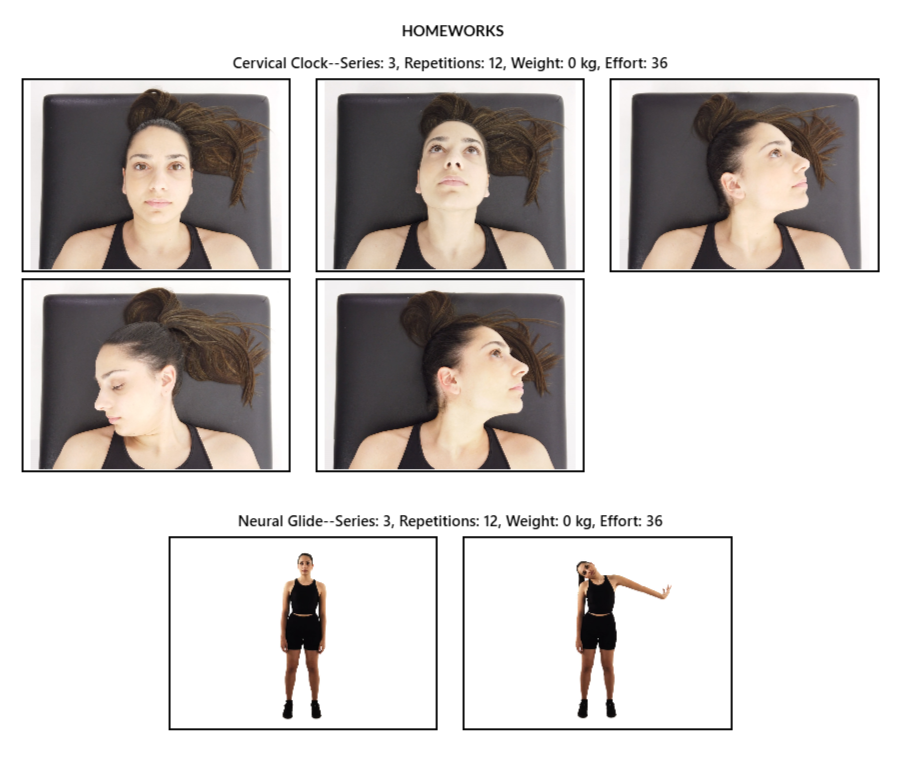 Fig. 2 – Exercises assigned for home using baiobit software
Fig. 2 – Exercises assigned for home using baiobit software
Results
At the end of each session, a re-evaluation of the cervical ROM was performed (figure 3), to monitor the progress achieved step by step:
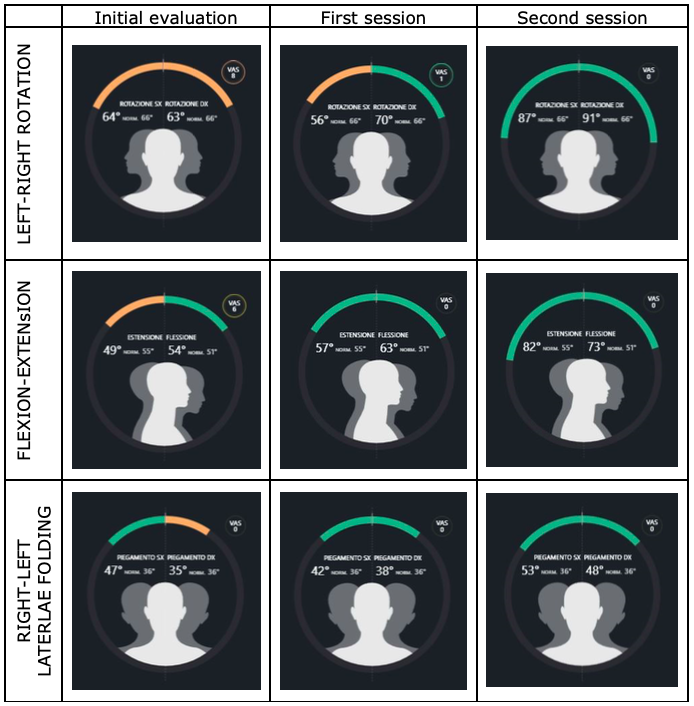 Fig. 3 – Evaluation of the cervical ROM
Fig. 3 – Evaluation of the cervical ROM
After 2 weeks, finished the therapy, it was possible to compare the ROM and the painful symptoms. Results showed an improvement in mobility and a clear decrease in pain (figure 4).
From the initial assessment to the reassessment of the second session, it was possible to the following progresses:
- Right rotation – 30% improvement
- Left rotation – 26% improvement
- Extension – 40% improvement
- Decline – 26% improvement
- Right lateral bending- 26% improvement
- Left lateral bending – 11% improvement
- Disappearance of painful symptoms
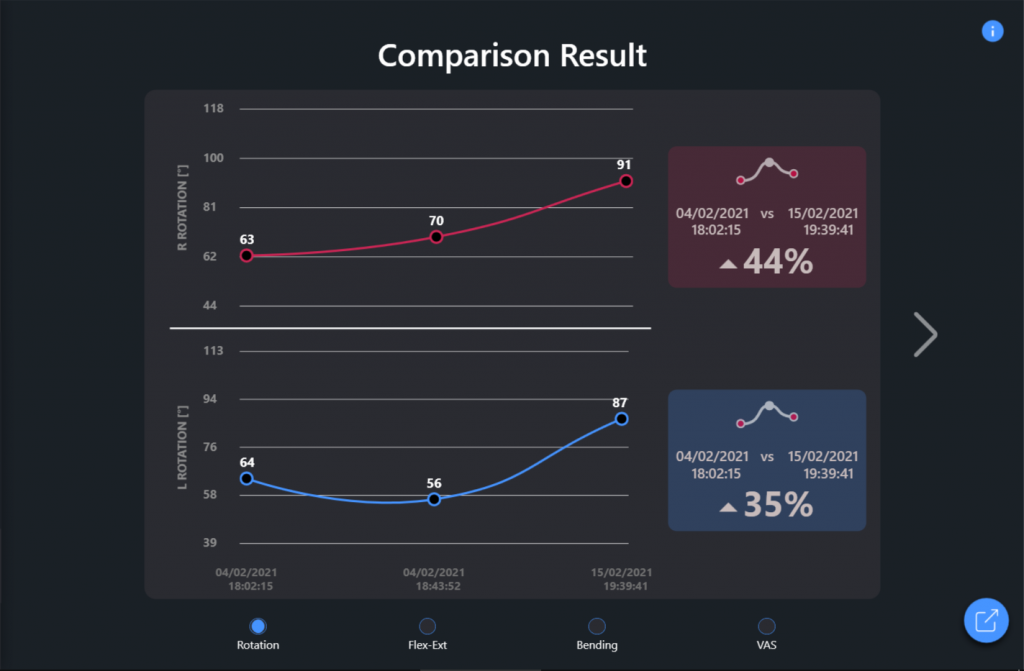
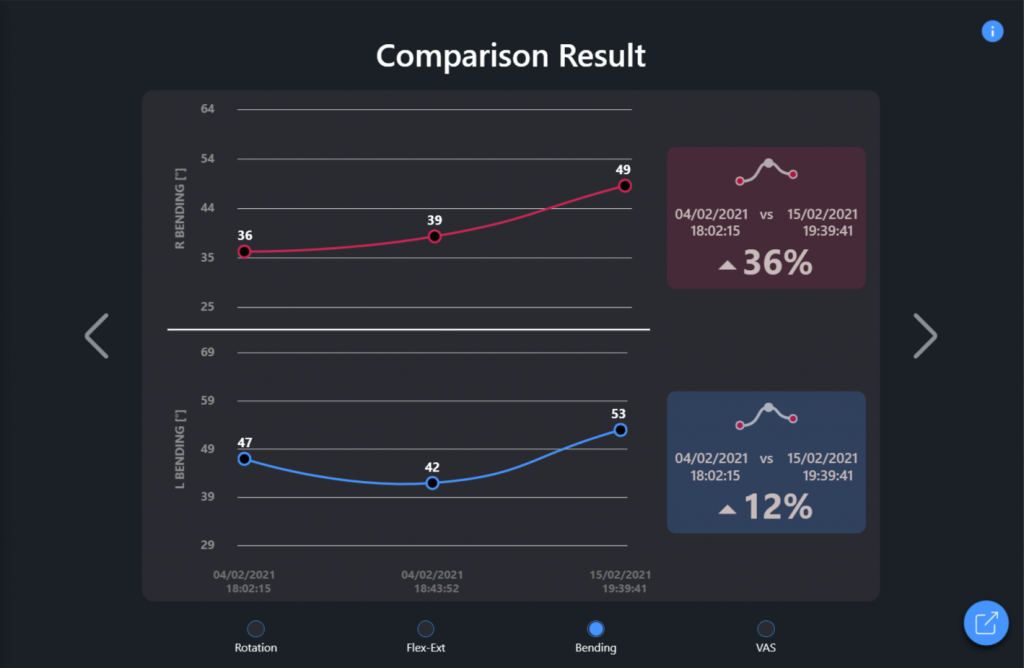 Fig. 4 – Comparazione dei risultati
Fig. 4 – Comparazione dei risultati
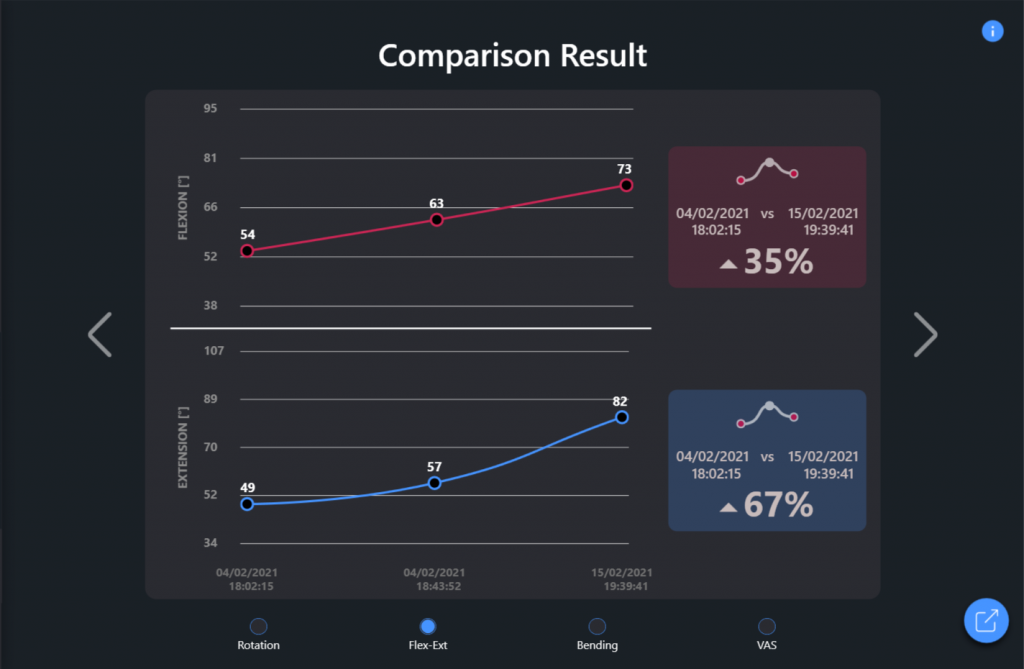
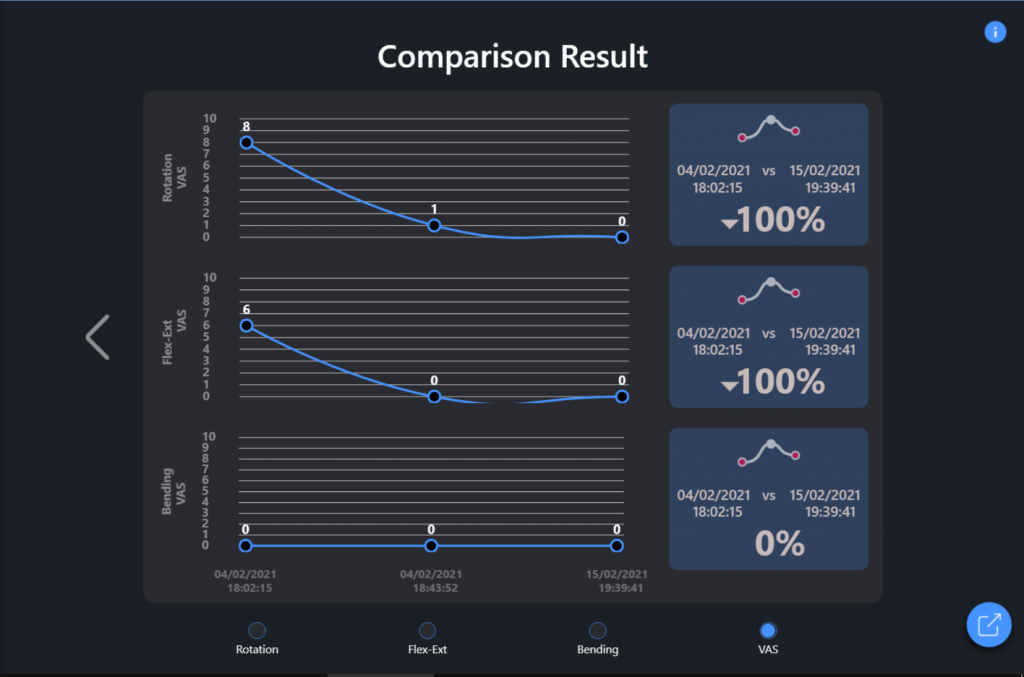
Conclusion
Thanks to the rehabilitation process performed, the patient is now able to maintain an active lifestyle compatible with his daily needs. Considering the clinical tests carried out, the confirmation of the objective data obtained thanks to baiobit allowed both to monitor step by step the evolution of the range of motion on the different anatomical planes and to involve the patient by showing him the progress of the therapy.